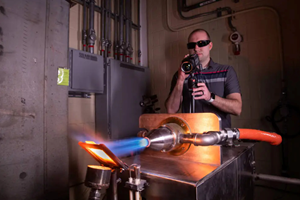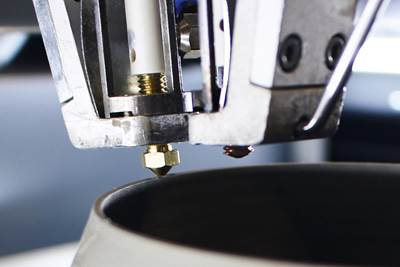Advanced materials portfolio extends property variety of composites
CAMX 2024: 3M highlights the inclusion of Glass Bubble microspheres or the use of Nextel ceramic fibers and textiles to enhance the performance, safety and efficiency of customer applications.
Share
3M’s family of Nextel products (top left) and Glass Bubbles (bottom left). Source | 3M Advanced Materials
3M Advanced Materials (St. Paul, Minn., U.S.) presents composite material options which assist customers in creating more efficient, effective and impactful solutions. Specifically, 3M Glass Bubbles and 3M Nextel ceramic fibers enable manufacturers to improve the performance, safety and efficiency of their products.
3M’s Nextel ceramic fibers and textiles offer a combination of high-temperature resistance, chemical stability and durability. 3M Nextel fibers are commonly used in aerospace and industrial applications, serving as critical components in aircraft engines, space vehicles and protective clothing for workers facing high-heat conditions. Their resilience to thermal shock, ability to withstand temperatures up to 1200°C, and low thermal conductivity make them ideal for extreme environments and industries demanding performance under stress.
According to 3M, its Glass Bubbles can help reduce weight, while maintaining structural integrity, resulting in improved processing and dimensional stability, as well as enhanced insulation properties. The hollow glass microspheres are widely used in the automotive, aerospace and construction industries, offering the ability to create light, fuel-efficient components and to enhance the physical properties of coatings and composites.
3M Advanced Materials, as well as a diverse team of sales and technical support spanning across the U.S., are available to help determine new opportunities, to progress customer projects and achieve new goals. Its diverse range of materials are engineered for high performance, offering solutions that enhance durability, improve energy efficiency and enable light, strong and heat-resistant applications across various sectors.
Related Content
-
A new era for ceramic matrix composites
CMC is expanding, with new fiber production in Europe, faster processes and higher temperature materials enabling applications for industry, hypersonics and New Space.
-
MATECH C/ZrOC composite is deployed in hypersonic aeroshells
Ultra high-temperature insulating CMC targets hypersonics, space heat shields and other demanding applications, tested up to 2760°C under extreme stagnation pressures.
-
MATECH’s FAST technology achieves ultra-high density C/C composites
Targeting demanding hypersonic missile applications and ballistic reentry, the patent-pending process increases C/C composite ablation and oxidation resistance by 20 times.
Related Content
A new era for ceramic matrix composites
CMC is expanding, with new fiber production in Europe, faster processes and higher temperature materials enabling applications for industry, hypersonics and New Space.
Read MoreMATECH C/ZrOC composite is deployed in hypersonic aeroshells
Ultra high-temperature insulating CMC targets hypersonics, space heat shields and other demanding applications, tested up to 2760°C under extreme stagnation pressures.
Read MoreMATECH’s FAST technology achieves ultra-high density C/C composites
Targeting demanding hypersonic missile applications and ballistic reentry, the patent-pending process increases C/C composite ablation and oxidation resistance by 20 times.
Read MoreGE Aerospace awarded demonstration contract for NASA HyTEC project
Turbofan engine small core technology development with CMC-coated components targets enhanced fuel efficiency in single-aisle aircraft by mid-2030s.
Read MoreRead Next
A new era for ceramic matrix composites
CMC is expanding, with new fiber production in Europe, faster processes and higher temperature materials enabling applications for industry, hypersonics and New Space.
Read MoreVIDEO: High-volume processing for fiberglass components
Cannon Ergos, a company specializing in high-ton presses and equipment for composites fabrication and plastics processing, displayed automotive and industrial components at CAMX 2024.
Read More









